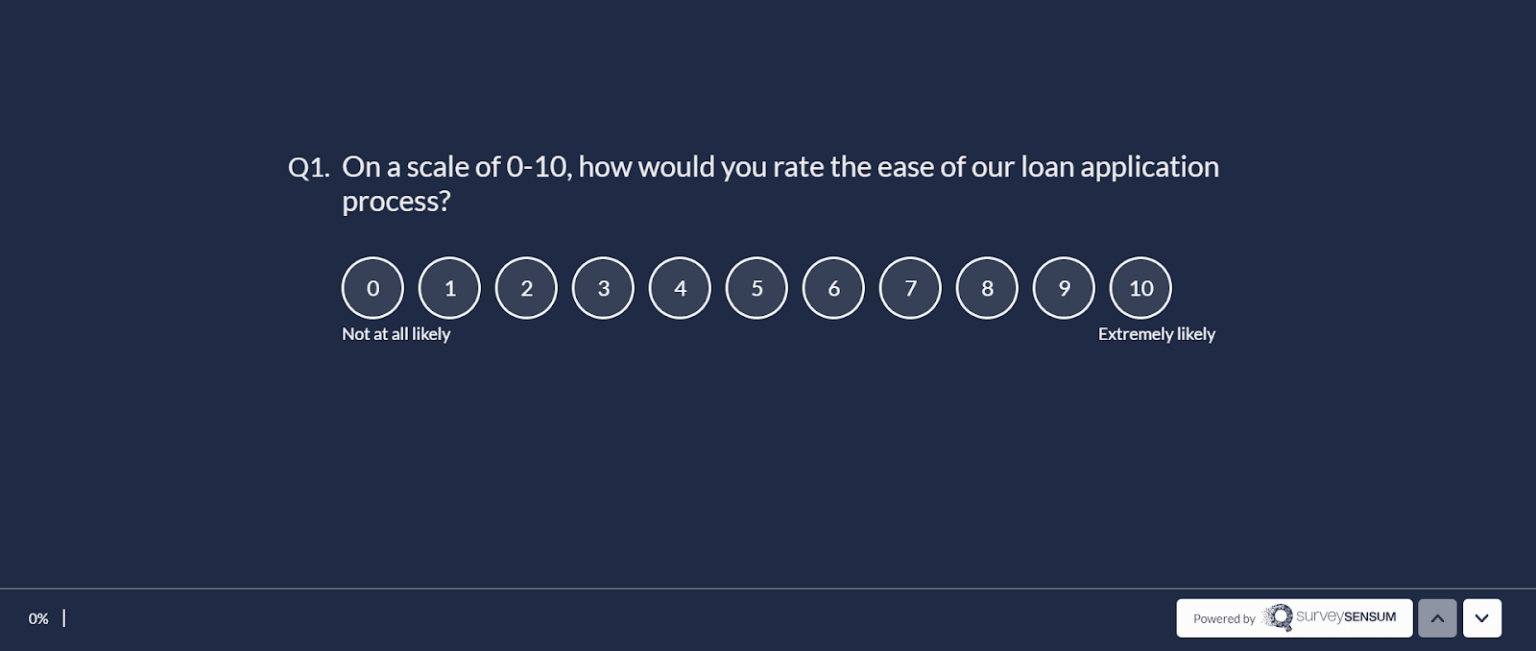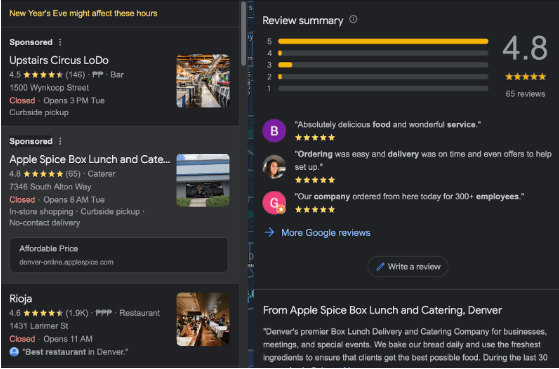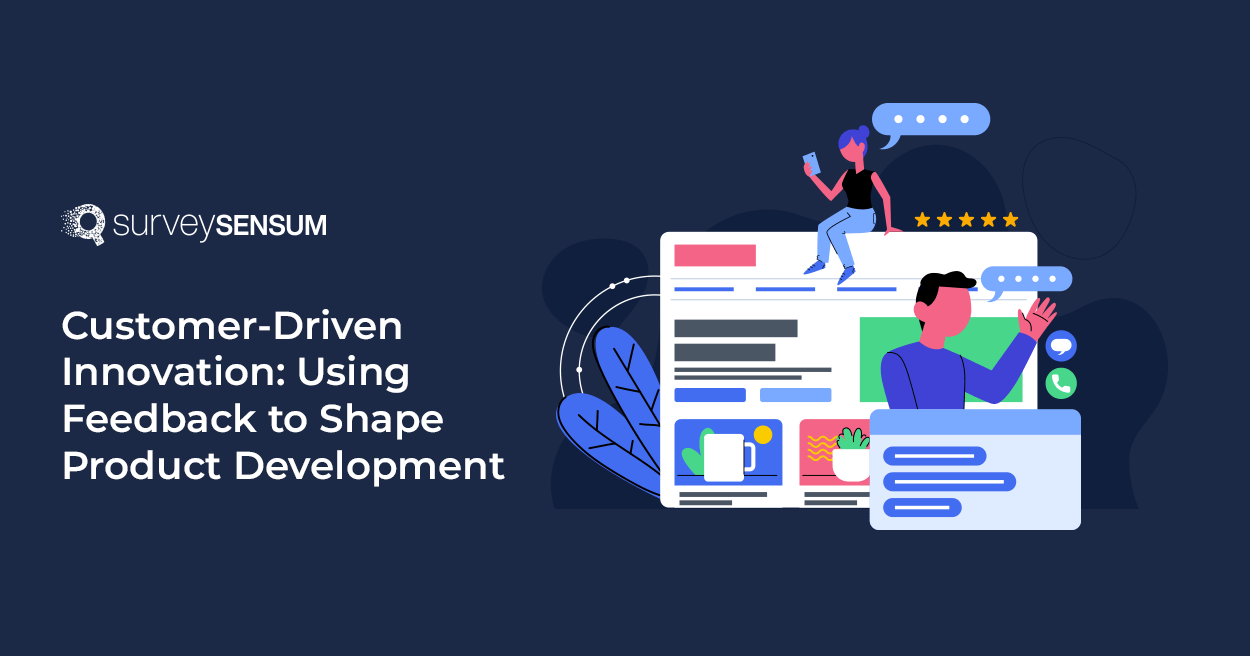
Looking to develop new products and kick your business up a notch? Hold your horses; You better pay attention to your target market!
Here’s the thing: Customer-centric brands are 60% more profitable than those that are not.
As such, listening to what your potential and regular customers have to say does matter. That’s where customer feedback comes in for your product development initiative.
In this article, we’ll share with you the importance of customer feedback for product development and business innovation.
Read on to learn how to get and work on such feedback for developing and shaping new products for your company.
Ready? Let’s dive right in!
The Importance of Customer Feedback for Product Development and Business Innovation
The Importance of Customer Feedback for Product Development and Business Innovation
First things first, what is customer feedback?
It consists of insights received from different customers about their experiences with your brand as well as your products or services. These valuable insights come from various digital channels, such as the following:
- Customer surveys
- Online reviews
- Emails
- Social media
- Website
Customer feedback may be in the form of opinions or comments as well as suggestions or recommendations.
Think of customers complaining about your whitening soap that doesn’t really make their complexion fair. On the other side of the spectrum, consider consumers who are delighted with the prompt customer service they receive. Or factor in people who suggest lowering the prices of your goods or items.
Here are some feedback examples from a sustainable brand website offering beauty products:

Catherine Schwartz, Finance Editor at Crediful, highlights the importance of getting customer leveraging feedback for product development:
“Your business exists because of the consumers. As such, it makes sense to understand what these customers need and want. The feedback obtained will help you develop innovative products and offer remarkable services that truly meet their needs and completely satisfy them.”
The benefits of customer leverage feedback for product development are multifold, as follows:
- Identified customer needs: Wondering what your target consumers exactly want and need? Ask them directly. That’s how useful customer feedback is—you are able to understand them and identify their needs!
- Enhanced product quality: Looking to ensure the quality of your products? Aside from meeting standards and complying with regulations, your customers will tell you so! Their feedback will help you create top-notch products!
- Earned consumer trust: Acknowledging customer feedback and working on improving your products will let you earn consumer trust. That results in customer support and loyalty—A win-win for both parties!
- Increased customer satisfaction: Customer feedback is the means to an end—a boost in CSAT. Quality products and earned trust will make your customers happy with what you have to offer.
- Consistent business profitability: Gathering customer insights as a way to work on improving your products can go a long way. It can go as far as augmenting the bottom line as customers will most likely patronize your brand and buy your products!
- Significant cost reduction: Not only does it help skyrocket your profits, but customer feedback also aids in cutting your expenses. How? You develop products that truly cater to consumer needs without wasting money and resources on the non-essentials!
- Continuous growth and innovation: Customer feedback is one of the first few steps you can take on your way to business success. You might be amazed at how obtaining customer insights and optimizing your products leads to business growth and innovation.
Don’t worry; It’s easier to get customer feedback now than ever before.
Start launching product feedback surveys with SurveySensum!
About 85% if they have a good experience with a brand. Meanwhile, over 80% do so if they have a terrible experience with a company.
That said, ask the most crucial question:
How to leverage feedback for product development and business innovation?
Find out the answer to this critical question in the next section.
How to use Customer Feedback for Developing and Shaping Products?
So, how do you use customer feedback to shape products for guaranteed business innovation?
Here are five practical tips:
1. Define your objectives for using customer feedback
As with any business endeavor, you ought to know the reason for doing so. Ask yourself why you ought to secure customer feedback and how it will impact your business in the long run. In this case, you’re doing so for creating new products or developing existing ones.
Let’s cut to the chase—start by setting clear objectives for utilizing customer feedback. Consider the following:
- Product development: Are you planning to launch a new product or innovate your current goods or items? Take note: Customer feedback tells you exactly what public consumers need and what your target customers want.

- Business innovation: Are you seeking to grow and expand your business through robust digital product development? Fret not, as customer feedback can guide you in innovating your brand and offering something new and unique to the table.
- Customer satisfaction: Are you looking to delight your customers with utter satisfaction? Customer feedback will surely help you achieve this objective. However, you ought to measure CSAT by setting goals, metrics, and strategies.
- Business profitability: Are you aiming to kick your sales revenue up a notch? Developing products can definitely help; however, customer feedback is the key to it!
2. Pick the methods for obtaining customer feedback
It’s no longer hard for brands to obtain customer feedback due to various channels available online. In fact, your website can be the first stop for gathering insights from your valued customers. However, you can resort to various platforms using particularly relevant strategies.
That said, consider the following methods for getting customer feedback:
- Surveys: Needless to say, they are the most straightforward way to get feedback from customers. However, you better implement best practices for securing customer surveys. Be highly critical in crafting questions that will bring out the best in your product development strategies!

- Interviews: If surveys don’t necessarily work, you can directly interview your regular customers or potential consumers. Interviews will help you unravel and understand their pain points, unique preferences, personal goals, and even purchase motivations.
- Emails: They have always been useful for reaching out to regular and potential customers. But while at it, prepare critical questions that will help you acquire valuable insights from them. Doing so can make a world of difference in your customer leveraging feedback for product development.
- Social media: It’s best not to turn a blind eye to your social media pages. Not only do they live and breathe on these channels, but customers also freely comment on them. What better way to capitalize on them than to collect, sort, and interpret customer feedback?
- Website: As mentioned, your site can be the best platform for getting customer feedback. You can install website feedback forms where customers can easily and quickly leave messages, whether opinions, suggestions, or violent reactions.
Explore SurveySensum To Improve User Experience
3. Implement your chosen methods and start collecting actual data
At this point, you can go ahead and get customer feedback. However, you must have already chosen online channels and specific methods for obtaining insights. It’s best to implement customer feedback strategies that will help you turn feedback into actions.
To get started, take the following steps below:
- Regular tracking: If you rely on your website and social media pages, you must monitor your customers’ activities on the platform. Fret not, as tracking tools are readily available to help you collect and sort customer data.
- Data collection: If you send online surveys, you better put them in a unified platform for data analysis later on. For the most part, you can be on the lookout for customer feedback by visiting third-party websites for online reviews. These sites have a goldmine of insights worth – hearing and collecting from!

- Organizing data: After tracking customer insights and collecting valuable data, it’s time to sort them out. Don’t worry, as you can do this manually or automatically using software apps. Just remember that this step is key to an efficacious data analysis.
4. Analyze the data collected and interpret your customer feedback
Data collection for feedback interpretation is the most crucial part of all. Now is the time when you ought to analyze all the pieces of information collected. And from there, interpret the multiple insights gathered from various customers of different backgrounds. This step requires you to delve deeper into the customer feedback for a successful product development process.

Take note of the following:
- Data analysis: With all the pieces of information in place, go ahead and filter what is valuable from what isn’t. Likewise, only cover opinions, comments, suggestions, and recommendations relevant to your product development endeavor. You can set aside the other insights obtained for other related business projects.
- Feedback interpretation: It’s imperative to understand various types of feedback, be they surveys, reviews, or interviews. From there, you can sit down with your team to brainstorm using leveraging feedback for product development. To aid you in the entire process, you can use automation and machine learning (ML) to help analyze data based on patterns or trends.
5. Integrate customer feedback into your product development process
Finally, you’ve reached the concluding part—the actual execution. This is where you’ll start incorporating customer feedback into your business undertakings. This is when you must consider valuable insights in your product development process.
Here’s what to keep in mind:
- Start with cross-functional collaboration. Get everyone involved in your product development process, from the top management to the design and production team up to the sales and marketing.
- Incorporate feedback into departmental processes. Make sure you consider valuable and relevant insights in optimizing various processes for all your departments involved.
- Create and innovate the envisioned products. The production team is responsible for developing goods and items. Every team member should adhere to the standard operating procedures (SOPs) to guarantee the success of your product development process.
- Promote your newly launched goods or items. After production, the work doesn’t end. Getting the sales and marketing teams to market and sell the goods or items is best. Capitalize on their unique value proposition (USP) based on gathered customer feedback.
- Leverage digital tools and technologies. Think of automation, artificial intelligence (AI), customer relationships management (CRM), IT ticketing systems, and more. They can assist in data gathering, analysis, and reporting. On a specific note, you can use omnichannel analytics to obtain customer feedback from various digital channels.
- Continuously obtain customer feedback and optimize your products. There’s a need to monitor your performance and track your progress. Getting feedback should be an ongoing process, more so improving your products.
Final Words
Customer feedback plays a crucial part in your business, especially when it comes to product development and business innovation.
This means you’ve got to know what consumers want before innovating and putting new products on the market. More importantly, align what you have to offer with what your customer needs.
That said, consider the customer feedback tips and steps recommended above. Start with defining your objectives and end with integrating feedback into your process.
By doing so, you’ll develop, shape, and launch products that will surely meet consumer needs. That can translate to a boost in consumer trust, customer satisfaction, and business profits.
But wait, there’s more to these benefits than meets the eye. In the end, give what your customers want and need, and you’ll be on your way to business growth and innovation!
Author bio
Leela Srinivasan, the visionary CEO at Parity is a seasoned marketing and communications professional with a passion for driving brand growth and engagement. With a diverse background spanning technology, SaaS, and B2B sectors, Leela has consistently delivered impactful marketing strategies that resonate with target audiences.















